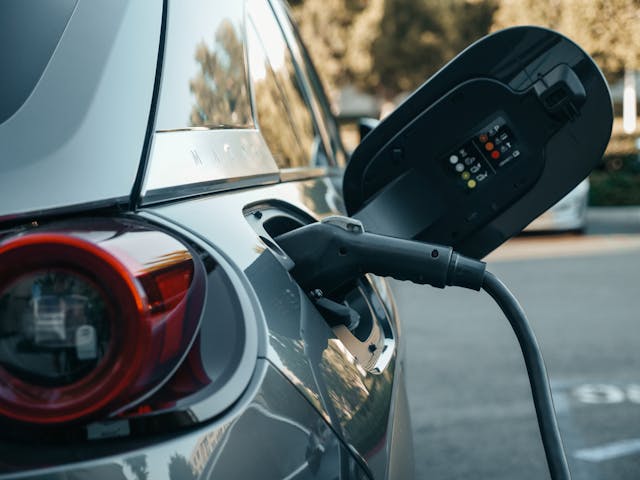In the race toward faster and more powerful electric vehicle (EV) charging, the automotive industry has heavily leaned into direct current (DC) fast charging as the default solution for consumers and businesses alike. Images of roadside megachargers have filled advertising spaces, pitching the idea that a five-minute charge is the gold standard for progress. Yet, this rush toward speed overlooks a more nuanced truth: faster is not always better. For most EV users, alternating current (AC) charging offers not only sufficient performance but a more stable, sustainable, and cost-efficient experience.
The fetishization of charging speed mirrors a similar pattern from the early smartphone era, when rapid charging was marketed as revolutionary despite most users charging their devices overnight. Today’s EV owners, particularly those with regular commute patterns or access to home or workplace charging, often do not need the ultra-fast capabilities DC chargers offer. What they require is a reliable, intelligently placed, and economically viable charging option that aligns with their daily routines, not one optimized for long-haul trips they take a handful of times each year.
By fixating on peak charging speeds, we risk neglecting the long-term implications of widespread fast-charging infrastructure. These systems are expensive to install, demanding high-voltage electrical access, extensive permitting, and ongoing maintenance that municipalities and businesses are often ill-prepared to manage. Conversely, AC charging solutions offer a simpler path forward, one that harmonizes more naturally with existing electrical infrastructure, especially in urban and suburban environments.
AC Charging: The Unsung Hero of EV Infrastructure
Alternating current charging, often relegated to second-tier status behind its high-powered DC sibling, is poised to reclaim the spotlight in the EV conversation. Unlike DC fast chargers, which convert electricity outside the vehicle and feed it directly into the battery, AC chargers allow the car’s onboard inverter to manage the power flow. This system, though slower by design, introduces greater control and efficiency into the charging process, particularly for overnight or multi-hour sessions.
Residential and commercial building owners find AC charging more palatable due to its lower capital expenditure and ease of integration. With most vehicles parked for extended periods at homes, offices, or shopping centers, the AC model fits naturally into consumer lifestyles. It supports the idea of opportunity charging, where EVs gain energy gradually over the course of a typical day, eliminating the need for high-voltage installations that often require costly upgrades to local grid infrastructure.
The innovation occurring within the AC space is not to be underestimated. Companies like ChargeTronix have engineered advanced modular AC systems that maximize uptime and flexibility for clients ranging from multifamily housing to workplace campuses. Their ability to balance customization with reliability offers a compelling vision for how AC charging can serve the backbone of our everyday EV ecosystem.
Grid Harmony and Energy Management
One of the most significant yet underappreciated benefits of AC charging is its symbiotic relationship with the electrical grid. AC chargers draw power at a steadier, lower rate than their DC counterparts, minimizing strain during peak usage hours and enabling better load balancing. This characteristic becomes crucial as more EVs connect to the grid and utilities struggle with surges in demand, especially in densely populated urban centers.
AC infrastructure also lends itself well to integration with renewable energy sources. Solar-powered homes and businesses, for instance, can use AC chargers to optimize energy flow without needing complex energy storage systems. Moreover, with the advent of smart grid technologies, utilities are increasingly able to use AC charging as a demand response tool, incentivizing EV owners to charge during off-peak hours. This can result in reduced electricity costs for users and improved stability for the grid.
Perhaps most compelling is the future potential of vehicle-to-grid (V2G) functionality, where EVs act as mobile energy storage units. This concept, while still emerging, requires a level of compatibility and control best achieved through AC systems. By allowing two-way communication and energy transfer between the vehicle and the grid, AC charging could become a pillar in the transition to more resilient and decentralized energy networks. These benefits position AC charging not as a lesser alternative but as a cornerstone of a balanced, future-proof EV strategy.
Cost Considerations for Businesses and Municipalities
The economics of EV infrastructure buildout are increasingly driving decision-makers to reconsider the value proposition of AC charging. While DC chargers often command attention for their speed, they come with a price tag that can quickly escalate, both in terms of equipment and operational overhead. Installation of a DC fast charger may cost three to five times more than a Level 2 AC charger, a gap that widens when factoring in transformer upgrades and trenching requirements.
For businesses seeking to offer EV charging to employees or customers, the return on investment for AC units is often more favorable. Many workplaces find that employees are parked for long periods, making fast charging unnecessary. A network of well-placed AC chargers can serve more vehicles at a lower cost, and their modular nature means they can scale as demand increases without the same infrastructure headaches associated with DC systems.
Municipalities, too, are recognizing the advantages of AC deployment. Cities looking to electrify their vehicle fleets or provide public access charging in parks and community centers are increasingly turning to AC solutions. These installations are not only quicker and cheaper to deploy but also easier to maintain and operate over time. When balancing budget constraints with the growing mandate to support EV adoption, AC chargers present a compelling blend of fiscal prudence and functional reliability.
User Experience and Behavioral Realities
Beyond the technical specifications and economic arguments lies a critical question: how do people actually use EVs? Data from across North America consistently shows that most EV owners drive less than 40 miles per day and charge their vehicles at home or work. This behavioral pattern suggests that the overwhelming majority of charging needs are perfectly served by Level 2 AC infrastructure, which can replenish 20 to 25 miles of range per hour.
Convenience often outweighs speed when it comes to EV charging habits. Users prefer plug-and-play simplicity that fits into their lifestyle rather than rushing to a charging station for a rapid top-up. The psychological appeal of fast charging may be strong, but the real-world benefits often do not justify the extra complexity and cost. As EVs continue to proliferate in middle-income neighborhoods and residential complexes, AC charging is becoming synonymous with practicality.
From a design perspective, AC systems also offer a better user interface and experience. Many models now include app integrations, real-time monitoring, and intuitive payment systems. These features contribute to a frictionless experience that aligns with broader trends in digital convenience. The future of EV charging, if it is to be inclusive and scalable, must cater to how people live and move, not just how fast a battery can be filled.
A Smarter Path Forward for Electrification
If the EV transition is to be sustainable, it must embrace a smarter, more strategic approach to infrastructure. AC charging offers that path, not through the flash of rapid performance but through the quiet, consistent value it delivers to drivers, cities, and businesses. The focus should shift from maximum speed to optimal fit, charging solutions that meet users where they are, both literally and metaphorically.
Widespread AC charger adoption can accelerate electrification without overburdening local power systems or public budgets. It opens the door for rural communities, smaller businesses, and shared housing units to participate in the EV economy. And with continued advances in AC technology and grid integration, the long-standing notion that AC charging is outdated or insufficient becomes less relevant by the day.
As we move forward, the charging conversation must evolve beyond the binary of “fast or slow.” It must consider reliability, cost, grid impact, user habits, and long-term sustainability. AC charging, when deployed thoughtfully and supported by smart policy and partnerships, emerges not as a compromise but as the clearest signal yet of a maturing EV ecosystem, one that charges smarter, not just faster.




